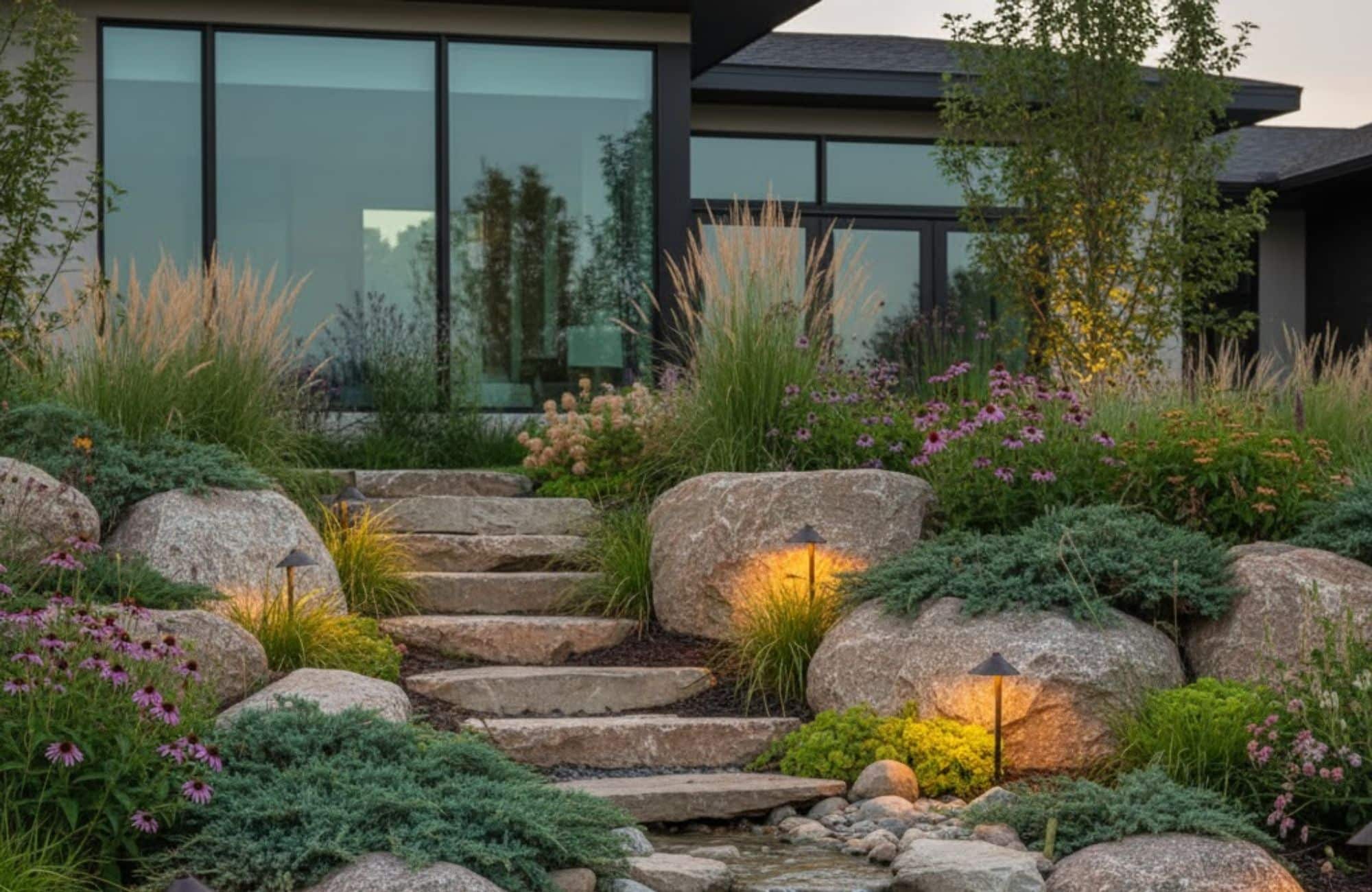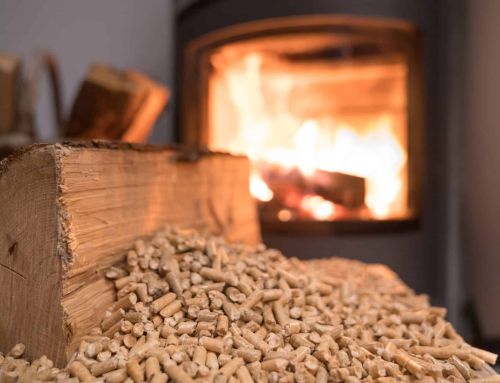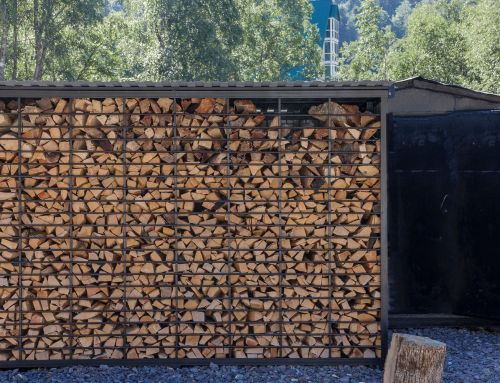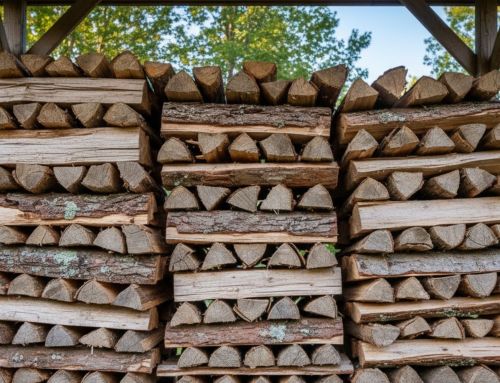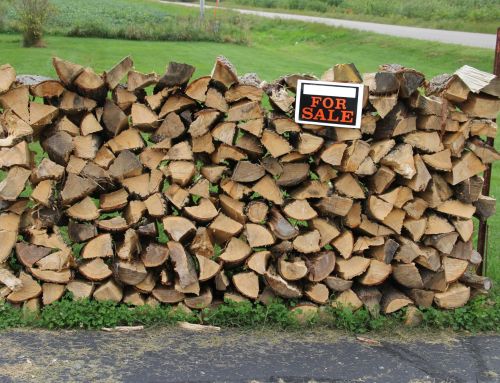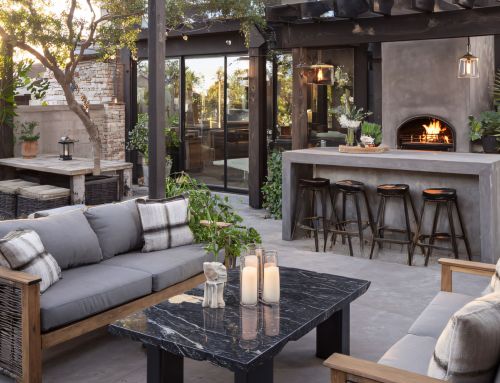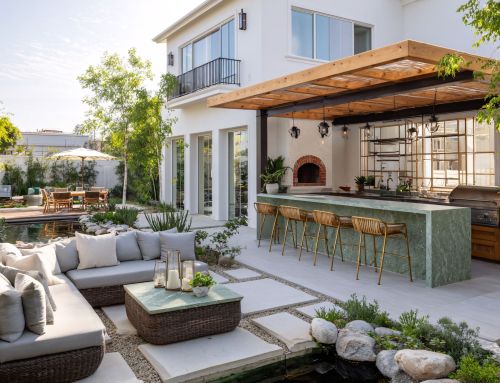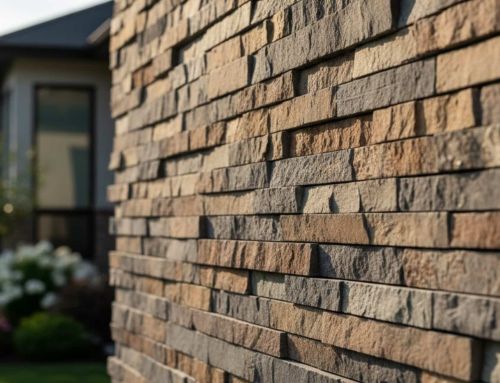Residential landscaping with boulders is one of the most effective ways to give your yard a natural, artistic, and long-lasting appeal. Boulders create striking focal points that immediately draw attention to your landscape. They also improve drainage and prevent erosion naturally. When chosen carefully, boulders enhance both the beauty and function of outdoor spaces. Properly placed stones blend with plants, gravel, patios, and retaining walls to form a timeless landscape.
At Old Station Outdoor & Landscape Supply, we’ve helped clients across New England build beautiful, lasting boulder landscapes. Our team understands New England’s soil, drainage, and weather challenges, offering expert guidance for every project. We help you select durable granite or bluestone and provide custom fabrication with dependable delivery services. Whether enhancing curb appeal or designing a backyard retreat, we supply the materials and knowledge to use boulders like a pro.
Why Boulders Elevate Residential Landscapes
Boulders add structure and permanence to your yard, serving as both design anchors and natural sculptures. Unlike smaller stones or mulch, large rocks help define outdoor areas and hold visual interest year-round, even during New England winters.
The presence of boulders creates an immediate connection to nature. They introduce organic shapes, textures, and colors that soften the appearance of paved patios, walls, and pathways. Boulders can serve as subtle garden accents or bold centerpiece features in any landscape. They add contrast and depth that traditional materials cannot match.
Here are some key reasons homeowners love incorporating boulders into residential landscaping:
- Timeless appeal: Natural stones never go out of style and complement almost any architectural design.
- Durability: Boulders resist weathering, making them perfect for Massachusetts’ freeze-thaw cycles.
- Low maintenance: Once installed, they require little upkeep compared to plants or wooden features.
- Functional benefits: Properly placed boulders can reduce soil erosion, support retaining walls, and direct water flow around your property.
Boulders aren’t just decorative. They’re structural and practical. When integrated thoughtfully, they enhance your home’s character while minimizing maintenance costs over time.
Choosing the Right Boulder Type & Size for Outdoor Space
Selecting the right boulders for your outdoor space involves more than just choosing stones that look good. The size, color, and texture should align with your design goals, property layout, and regional environment. At Old Station Outdoor & Landscape Supply, our team helps homeowners and contractors choose the ideal granite, bluestone, or fieldstone for each project. We provide expert guidance on selecting stones that complement your home’s architecture, withstand New England’s climate, and achieve the perfect balance between beauty and function.
When selecting boulders:
- Match scale to space. Large properties can handle multi-ton stones, while smaller yards benefit from clusters of smaller boulders.
- Consider texture and color. Earth tones like gray, tan, and brown blend easily with most homes and landscapes.
- Think about the placement purpose. Are you creating a focal point, edging a garden bed, or stabilizing a slope? The intended use determines ideal size and shape.
Boulder Placement: The Art of Natural Design
Placing boulders correctly can make or break your landscaping project. The goal is to ensure they look natural and balanced. Each stone should appear as though it has always belonged in the environment, not artificially added later.
A well-placed boulder adds balance and flow to your design. You’ll want to consider elevation, direction, and surrounding features such as plants or water elements. The art lies in subtlety. Your boulders should complement the space without overpowering it.
Here are a few placement guidelines to follow:
- Bury at least one-third of the boulder. This gives the illusion that the rock has been there for centuries and prevents it from shifting over time.
- Group in odd numbers. Three or five boulders of varying sizes create a natural rhythm that’s pleasing to the eye.
- Use varied orientations. Avoid placing all boulders facing the same direction. Rotate them to show different textures and break visual monotony.
- Follow slope and drainage. Use boulders to slow down water runoff and direct flow away from structures or garden beds.
For reference, here’s a simple guide for placement depth and usage:
| Boulder Size | Ideal Use | Depth to Bury | Recommended Tool |
|---|---|---|---|
| Small (1–2 ft) | Garden accents | ⅓ below grade | Shovel or hand lift |
| Medium (3–4 ft) | Yard focal points | ⅓ below grade | Skid steer or dolly |
| Large (5+ ft) | Retaining features, slopes | ½ below grade | Excavator |
Integrating Boulders with Other Landscape Elements
Boulders work best when they complement other landscape features instead of standing alone. Integrating them with patios, pathways, and water features creates a cohesive, natural design. Start by identifying the main elements of your outdoor space and how stones can enhance them. Patios, retaining walls, and garden beds all offer unique ways to use boulders creatively. Here are some design ideas:
- Pathway Borders: Use small or medium-sized stones along walkways to add definition and texture. Pair them with gravel or mulch to create smooth transitions between surfaces. This approach also helps control soil movement during heavy rain.
- Patio Accents: Place boulders around seating areas or outdoor kitchens to act as natural dividers. You can use flat stones as informal benches for additional function. This adds structure while maintaining a natural aesthetic.
- Water Features: Combine boulders with ponds, fountains, or waterfalls to mimic natural streams. Vary stone sizes and shapes for a realistic flow effect. The combination enhances both visual appeal and sound in your garden.
- Lighting Integration: Add soft, upward lighting to highlight the shape and texture of large stones at night. Use warm tones to create a welcoming atmosphere. This technique draws attention to the boulders and enhances evening curb appeal.
Practical Tips for New England Homes
Designing residential landscaping with boulders in New England requires careful planning due to the region’s unpredictable weather, soil conditions, and terrain. The area’s frequent freeze-thaw cycles and heavy winter snow can easily shift poorly installed stones. Proper preparation is essential to ensure long-term stability and lasting beauty. By following professional guidelines and using quality materials, you can ensure your boulder landscaping lasts for decades and remains attractive year-round.
- Choose frost-resistant stones. Use durable materials like granite and bluestone for Massachusetts and nearby areas. These stones resist cracking and maintain their color even after repeated freezing and thawing. Locally sourced options also tend to perform better because they are naturally adapted to the climate.
- Prepare the foundation. Always compact the soil beneath each boulder to prevent movement during seasonal changes. For large stones, use crushed gravel as a base layer to improve drainage and stability. Proper compaction ensures each stone stays secure, even under the weight of snow or melting ice.
- Account for drainage. Strategically place boulders to direct water runoff away from structures and garden beds. This helps prevent soil erosion and pooling in low-lying areas. You can also combine boulders with gravel beds or French drains for added protection.
- Consider winter aesthetics. Large stones continue to enhance your landscape even when plants are dormant or buried in snow. Their natural shapes and colors provide contrast against white backdrops, giving your yard visual interest in every season. You can also highlight these stones with subtle outdoor lighting to maintain curb appeal through the winter months.
Common Mistakes to Avoid
Even with the best materials, common mistakes can make your project look unfinished or unnatural. Understanding what not to do saves time and money. Avoid scattering small rocks randomly across your property because this creates visual clutter and reduces impact. Instead, group stones intentionally around landscape elements to maintain balance and focus within your outdoor space.
Also, don’t overlook soil stability since boulders placed on soft or uneven ground may shift after heavy rain or snow. Always compact the soil before placement to prevent long-term settling and structural movement. Finally, resist overdesigning your layout, as too many boulders close together can overwhelm the area. A few well-chosen stones, placed strategically, will make a stronger impression than a crowded arrangement.
Conclusion
Residential landscaping with boulders combines art, structure, and natural beauty to enhance any property. Whether you’re building a focal point, creating pathways, or strengthening slopes, the right stones bring character and permanence to your outdoor space. Boulders also improve drainage, define garden beds, and add dimension to otherwise flat areas, making them an essential part of long-lasting outdoor design.
At Old Station Outdoor & Landscape Supply, we provide premium natural stone materials, expert custom fabrication, and reliable delivery services throughout Massachusetts, Rhode Island, and Connecticut. Our team helps homeowners and contractors select the ideal granite, bluestone, or fieldstone for their project and offers professional guidance on placement, soil preparation, and design balance. From decorative garden accents to structural retaining walls, we have everything you need to create durable, beautiful outdoor spaces. Contact us today or visit our Norton showroom to start planning your next landscape project.
FAQs
How to use large boulders in landscaping?
To use large boulders in landscaping, start by selecting stones that complement your home’s design and natural surroundings. Bury at least one-third of each boulder for stability and a natural appearance. You can also position large boulders near patios, pathways, or water features to create strong visual focal points.
How to landscape an area with rocks?
To landscape an area with rocks, first plan your layout around existing plants and structures. Use different rock sizes and textures to add depth and contrast to the design. Finally, incorporate gravel or mulch between rocks to control weeds and blend the elements naturally.
What are the benefits of Boulder Gardens?
The benefits of Boulder Gardens include improved drainage, erosion control, and long-term durability. Boulders create a natural aesthetic that enhances garden character year-round, even during snow or winter months. They also reduce maintenance needs compared to traditional garden beds.
What size are landscape boulders?
Landscape boulders typically range from one to more than five feet in diameter. Smaller boulders work well for garden accents, while large ones are used for retaining walls or slope stabilization. The right size depends on your outdoor space, design goals, and installation method.

